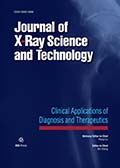Authors: Lai, Yexin | Liu, Xueyu | Hou, Fan | Han, Zhiyong | E, Linning | Su, Ningling | Du, Dianrong | Wang, Zhichong | Zheng, Wen | Wu, Yongfei
Article Type:
Research Article
Abstract:
BACKGROUND: Interstitial lung disease (ILD) represents a group of chronic heterogeneous diseases, and current clinical practice in assessment of ILD severity and progression mainly rely on the radiologist-based visual screening, which greatly restricts the accuracy of disease assessment due to the high inter- and intra-subjective observer variability. OBJECTIVE: To solve these problems, in this work, we propose a deep learning driven framework that can assess and quantify lesion indicators and outcome the prediction of severity of ILD. METHODS: In detail, we first present a convolutional neural network that can segment and quantify five
…types of lesions including HC, RO, GGO, CONS, and EMPH from HRCT of ILD patients, and then we conduct quantitative analysis to select the features related to ILD based on the segmented lesions and clinical data. Finally, a multivariate prediction model based on nomogram to predict the severity of ILD is established by combining multiple typical lesions. RESULTS: Experimental results showed that three lesions of HC, RO, and GGO could accurately predict ILD staging independently or combined with other HRCT features. Based on the HRCT, the used multivariate model can achieve the highest AUC value of 0.755 for HC, and the lowest AUC value of 0.701 for RO in stage I, and obtain the highest AUC value of 0.803 for HC, and the lowest AUC value of 0.733 for RO in stage II. Additionally, our ILD scoring model could achieve an average accuracy of 0.812 (0.736 - 0.888) in predicting the severity of ILD via cross-validation. CONCLUSIONS: In summary, our proposed method provides effective segmentation of ILD lesions by a comprehensive deep-learning approach and confirms its potential effectiveness in improving diagnostic accuracy for clinicians.
Show more
Keywords: Interstitial lung disease, deep learning, lesion quantification, severity
prediction
DOI: 10.3233/XST-230218
Citation: Journal of X-Ray Science and Technology,
vol. 32, no. 2, pp. 323-338, 2024
Price: EUR 27.50




